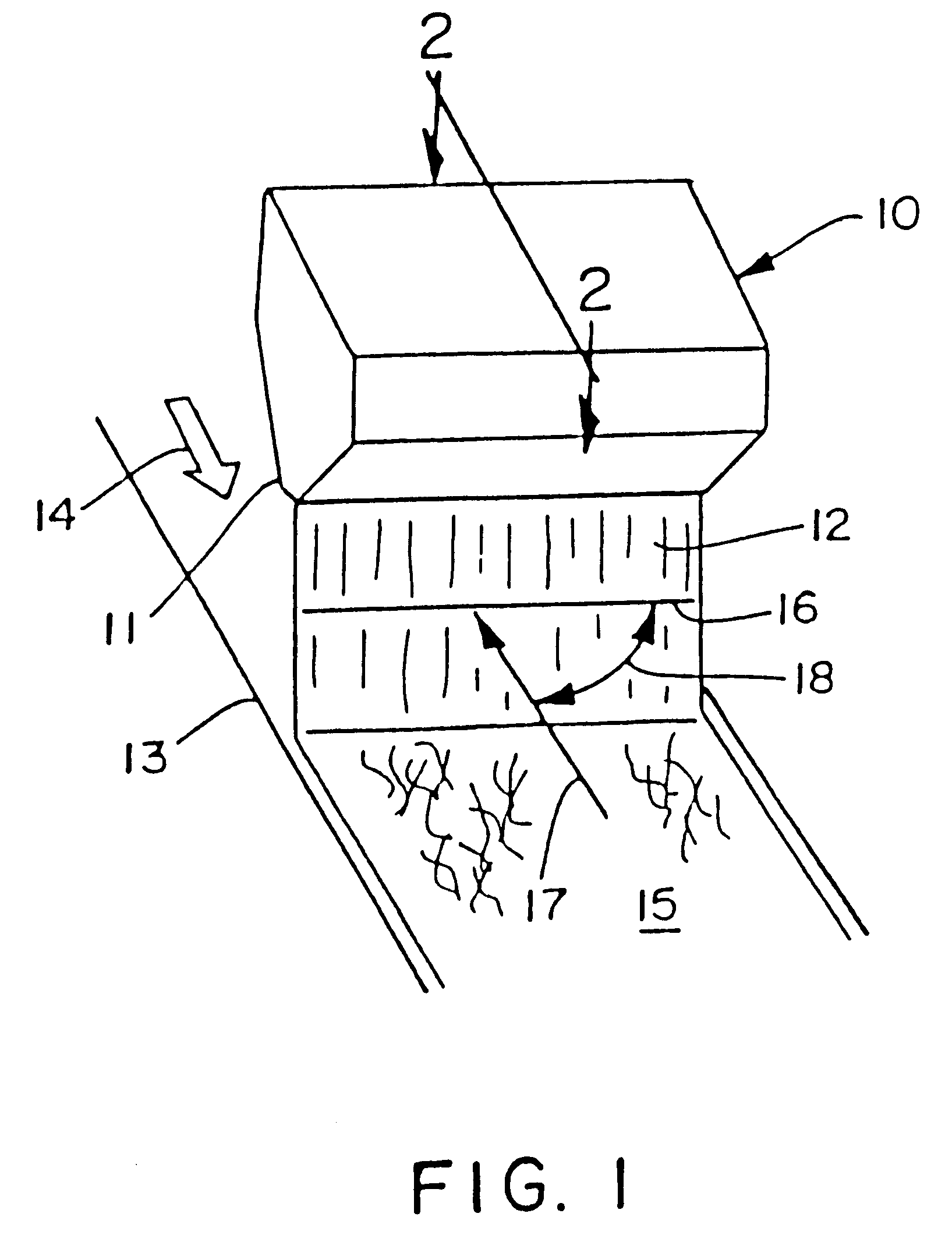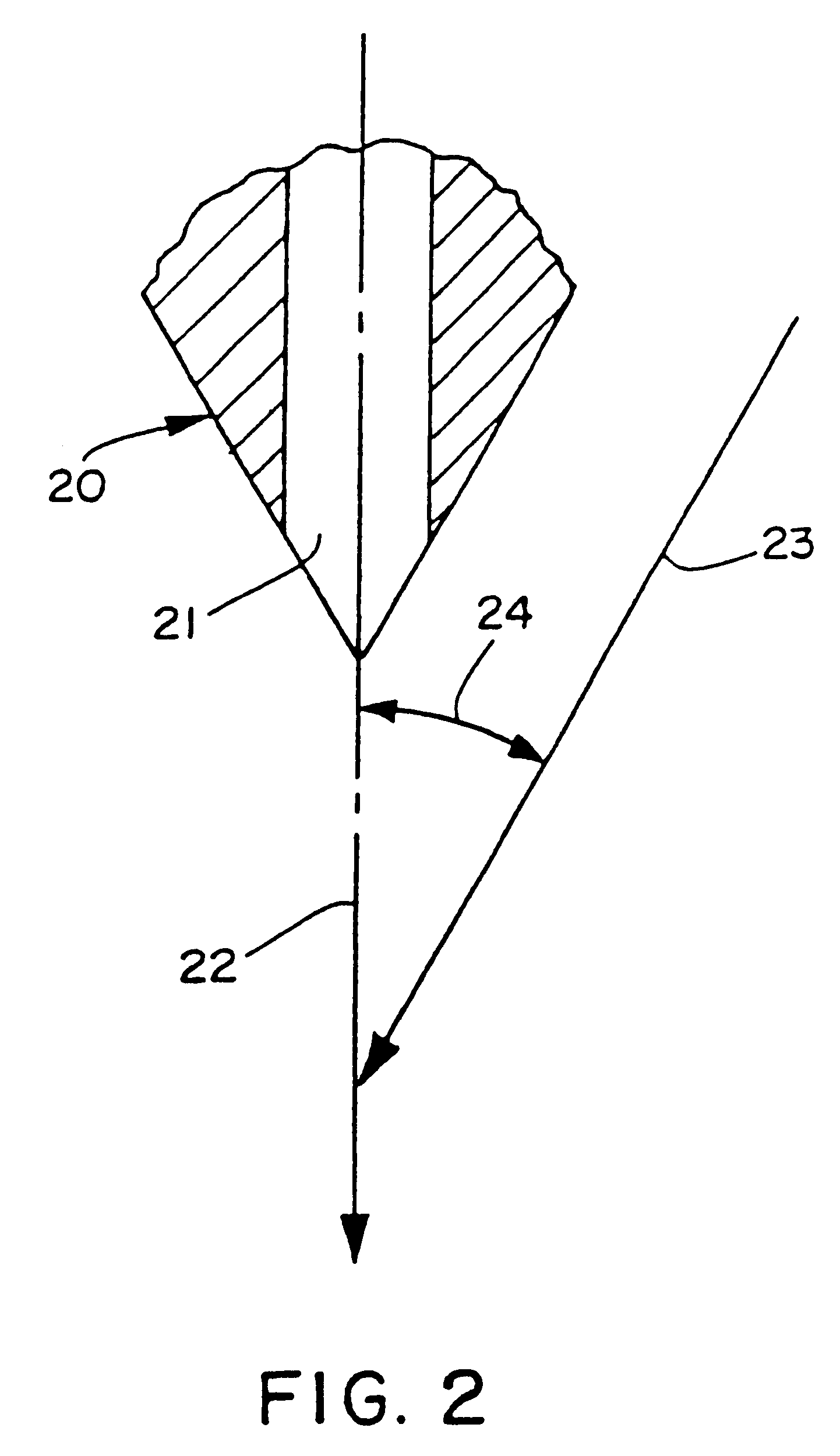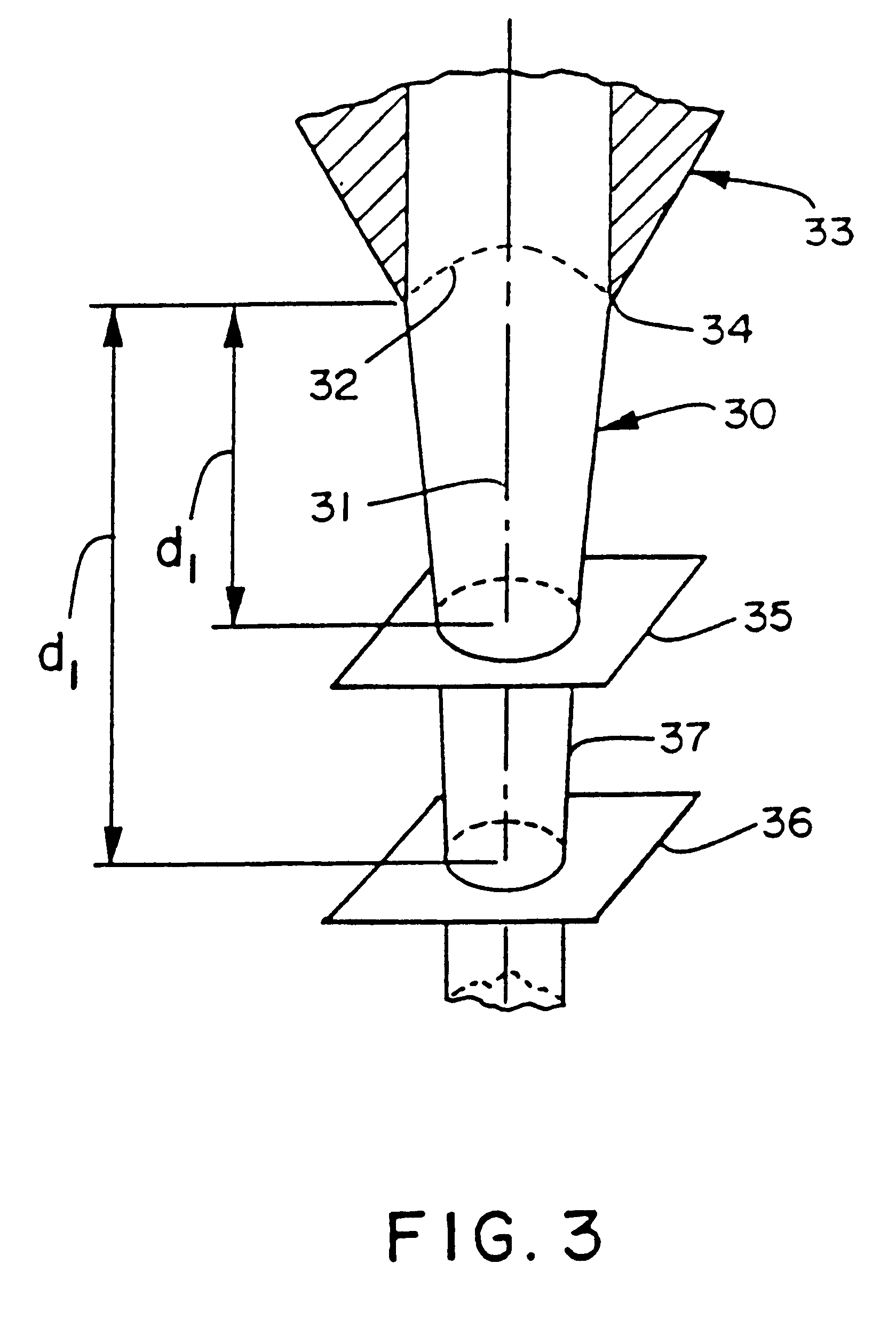Synthetic fiber nonwoven web and method
a non-woven, synthetic fiber technology, applied in the direction of weaving, synthetic resin layered products, natural mineral layered products, etc., can solve the problems of difficult and slow process of untangling and stretching, high molecular weight polymer fibers are difficult to pin, and if successful, crosslinking initiation requires extremely high temperatur
- Summary
- Abstract
- Description
- Claims
- Application Information
AI Technical Summary
Benefits of technology
Problems solved by technology
Method used
Image
Examples
example ii
The two polymer solutions prepared in Example I, of either APVE or EGVE crosslinking monomer, were separately spun into a continuous non-woven material having a fiber diameter about 5 to 8 microns and a web basis weight of about 50 gram per square meter. The non-woven containing APVE was heated at 140.degree. C. for 16 hours and had a free swell capacity of 25 g / g and an absorbency under load (AUL) of 17 g / g in 0.9% NaCl saline. The non-woven containing EGVE had to be cured at 200.degree. C. for 16 hours resulting in similar free swell capacity and AUL capacity.
The results show that the amino functionality cures at a temperature about 60.degree. C. lower than ethylene glycol vinyl ether in the fiber form, i.e., at a reduced crosslink temperature below that required for the hydroxyl functionality used to form the esterification in the fiber form.
example iii
The two polymer solutions prepared in Example I, of either APVE or EGVE crosslinking monomer, were separately spun into continuous non-woven material while coforming with cellulose wood pulp fiber (Coosa CR54) in a ratio of 33% by weight of polyacrylate copolymer fiber and 67% by weight of wood pulp fiber. The coform had a basis weight of 150 gram per square meter and a density of 0.02 g / cc. The polyacrylate fiber diameter was 5 to 8 microns, and the pulp fiber diameter was 20 to 30 microns.
The coform including APVE polyacrylate was heated at 150.degree. C. for 16 hours and demonstrated a free swell capacity of 15 g / g and an AUL capacity of 11 g / g in 0.9% NaCl saline. However, the coform including EGVE polyacrylate had to be heated at 150.degree. C. for 10 days before it became a water swellable, water insoluble material.
The absorbent properties of the coform including EGVE polyacrylate were similar to the coform including APVE polyacrylate. The coform made from the polymer containi...
example iv
2.29 kg of sodium hydroxide (NaOH) was dissolved in 21.8 kg of distilled water at room temperature in a 10 gallon reactor obtained from Pfaudler U.S., Inc. in Rochester, N.Y., Model DWV 50210-AKC. To this solution were added 5.9 kg of acrylic acid, 87.5 g of 3-amino-1-propanol vinyl ether, and 11.97 g of potassium persulfate (K.sub.2 S.sub.2 O.sub.4) and dissolved while the solution was agitated at room temperature. Polymerization was initiated and continued for 5 hours at 60.degree. C. The molecular weight of the polymer solution was 1,550,500. The solution was transferred into an autoclave and pressurized by compressed air at a pressure of 80 to 100 psi. The solution then was extruded by a metering pump at 70.degree. C. through a spinning plate having 20 orifices per inch with a diameter of orifice 0.35 mm. The primary gaseous source was heated compressed air humidified by the steam. The relative humidity of the primary gaseous source was greater than 90 percent. The secondary gas...
PUM
| Property | Measurement | Unit |
|---|---|---|
| diameter | aaaaa | aaaaa |
| linear velocity | aaaaa | aaaaa |
| temperature | aaaaa | aaaaa |
Abstract
Description
Claims
Application Information
 Login to View More
Login to View More - R&D
- Intellectual Property
- Life Sciences
- Materials
- Tech Scout
- Unparalleled Data Quality
- Higher Quality Content
- 60% Fewer Hallucinations
Browse by: Latest US Patents, China's latest patents, Technical Efficacy Thesaurus, Application Domain, Technology Topic, Popular Technical Reports.
© 2025 PatSnap. All rights reserved.Legal|Privacy policy|Modern Slavery Act Transparency Statement|Sitemap|About US| Contact US: help@patsnap.com



